- Clone
- BV9 (See other available formats)
- Regulatory Status
- RUO
- Other Names
- VE-Cadherin, cadherin-5, CDH5
- Isotype
- Mouse IgG2a, κ
- Ave. Rating
- Submit a Review
- Product Citations
- publications

-

Human umbilical vein endothelial cells (HUVEC) were stained with CD144 (clone BV9) Alexa Fluor® 647 (filled histogram) or mouse IgG2a, κ Alexa Fluor® 647 isotype control (open histogram). -

Human paraffin-embedded colorectal cancer tissue slices were prepared with a standard protocol of deparaffinization and rehydration. Antigen retrieval was done with Tris-Buffered Saline 1X (1.0 M, pH 7.4) (BioLegend, Cat number 925601) at 95°C for 40 minutes. Tissue was washed with PBS/ 0.05% Tween20 twice for 5 minutes and blocked with 5% FBS and 0.2% Gelatin for 30 minutes. Then, the tissue was stained with 10 µg/ml of anti-human CD144 (BV9) Alexa Fluor® 647 (red) at 4°C overnight. Nuclei were counterstained with DAPI (blue). The image was captured with a 10X objective.
| Cat # | Size | Price | Quantity Check Availability | Save | ||
|---|---|---|---|---|---|---|
| 348513 | 25 tests | 100€ | ||||
| 348514 | 100 tests | 244€ | ||||
CD144, also known as VE-cadherin and cadherin-5, is a 140 kD glycoprotein which is composed of five extracellular cadherin repeats and a highly conserved cytoplasmic tail region. It is a calcium-dependent transmembrane cell-cell adhesion molecule localized at the intercellular boundaries of endothelial cells, hematopoietic stem cells, and perineurial cells. It functions as a classic cadherin by mediating homophilic adhesion and functions as a plasma membrane attachment site for the cytoskeleton. CD144 is thought to play a role in vascular development, permeability, and remodeling.
Product DetailsProduct Details
- Verified Reactivity
- Human
- Antibody Type
- Monoclonal
- Host Species
- Mouse
- Formulation
- Phosphate-buffered solution, pH 7.2, containing 0.09% sodium azide and BSA (origin USA)
- Preparation
- The antibody was purified by affinity chromatography and conjugated with Alexa Fluor® 647 under optimal conditions.
- Concentration
- Lot-specific (to obtain lot-specific concentration and expiration, please enter the lot number in our Certificate of Analysis online tool.)
- Storage & Handling
- The antibody solution should be stored undiluted between 2°C and 8°C, and protected from prolonged exposure to light. Do not freeze.
- Application
-
FC - Quality tested
IHC-P - Verified - Recommended Usage
-
Each lot of this antibody is quality control tested by immunofluorescent staining with flow cytometric analysis. For flow cytometric staining, the suggested use of this reagent is 5 µl per million cells in 100 µl staining volume or 5 µl per 100 µl of whole blood. For immunohistochemical staining on formalin-fixed paraffin-embedded tissue sections, a concentration range of 5 - 10 µg/ml is suggested. It is recommended that the reagent be titrated for optimal performance for each application.
It is also recommended using EDTA-based solutions for dissociating attachment-dependent cell lines.
* Alexa Fluor® 647 has a maximum emission of 668 nm when it is excited at 633 nm / 635 nm.
Alexa Fluor® and Pacific Blue™ are trademarks of Life Technologies Corporation.
View full statement regarding label licenses - Excitation Laser
-
Red Laser (633 nm)
- Application Notes
-
Clone BV9 has been shown to block VE-cadherin, causing a redistribution of VE-cadherin away from intracellular junctions.6 This clone binds to EC3-EC4 region in the extracellular domain of human VE-cadherin.7 Additional reported applications (for the relevant formats) include: Western Blotting1,2, immunofluorescence microscopy1,3, immunoprecipitation1,4, blocking angiogenesis in vitro4,5, inhibiting VE-cadherin reorganization4, and inducing endothelial cell apoptosis4.
-
Application References
(PubMed link indicates BioLegend citation) -
- Almagro S, et al. 2010. Mol. Cell Biol. 30:1703. (WB, IF, IP)
- Zhang F, et al. 2004. J. Biol. Chem. 279:11760. (WB)
- Iurlaro M, et al. 2004. Am. J. Pathol. 165:181. (IF)
- Corada M, et al. 2001. Blood 97:1679. (IP, Block)
- Kooistra M, et al. 2005. FEBS 579:4966. (Block)
- Corada M, et al. 2001. Blood 97:1679. (Block)
- Bouillet L, et al. 2013. Laboratory Investigation 93:1194-11202.
- RRID
-
AB_2563669 (BioLegend Cat. No. 348513)
AB_2563670 (BioLegend Cat. No. 348514)
Antigen Details
- Structure
- Member of the cadherin family; calcium-dependent transmembrane cell-cell adhesion glycoprotein composed of five extracellular cadherin repeats and a highly conserved cytoplasmic tail region
- Distribution
-
Endothelial cells, hematopoietic stem cells, perineurial cells
- Function
- Mediates calcium-dependent homophilic cell adhesion, plays fundamental roles in microvascular permeability and in the morphogenic and proliferative events associated with angiogenesis
- Ligand/Receptor
- VE-cadherin
- Cell Type
- Endothelial cells, Hematopoietic stem and progenitors, Mesenchymal Stem Cells
- Biology Area
- Angiogenesis, Cell Adhesion, Cell Biology, Cell Motility/Cytoskeleton/Structure, Immunology, Stem Cells
- Molecular Family
- Adhesion Molecules, CD Molecules, Protein Kinases/Phosphatase
- Antigen References
-
1. Taddei A, et al. 2008. Nat. Cell Biol. 10:923.
2. Gavard J, et al. 2006. Nat. Cell Biol. 8:1223.
3. Kim I, et al. 2005. Blood 106:903.
4. Suzuki S, et al. 1991. Cell Regul. 2:261. - Gene ID
- 1003 View all products for this Gene ID
- UniProt
- View information about CD144 on UniProt.org
Related Pages & Pathways
Pages
Other Formats
View All CD144 Reagents Request Custom Conjugation| Description | Clone | Applications |
|---|---|---|
| Purified anti-human CD144 (VE-Cadherin) | BV9 | FC,ICC,WB,IP |
| PE anti-human CD144 (VE-Cadherin) | BV9 | FC |
| APC anti-human CD144 (VE-Cadherin) | BV9 | FC |
| PerCP/Cyanine5.5 anti-human CD144 (VE-Cadherin) | BV9 | FC |
| Alexa Fluor® 594 anti-human CD144 (VE-Cadherin) | BV9 | ICC,IHC-P |
| Alexa Fluor® 647 anti-human CD144 (VE-Cadherin) | BV9 | FC,IHC-P |
| PE/Cyanine7 anti-human CD144 (VE-Cadherin) | BV9 | FC |
| PE/Dazzle™ 594 anti-human CD144 (VE-Cadherin) | BV9 | FC |
| TotalSeq™-A0400 anti-human CD144 (VE-Cadherin) | BV9 | PG |
| TotalSeq™-C0400 anti-human CD144 (VE-Cadherin) | BV9 | PG |
Customers Also Purchased
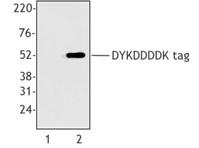
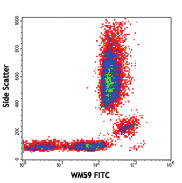
Compare Data Across All Formats
This data display is provided for general comparisons between formats.
Your actual data may vary due to variations in samples, target cells, instruments and their settings, staining conditions, and other factors.
If you need assistance with selecting the best format contact our expert technical support team.
-
Purified anti-human CD144 (VE-Cadherin)

Human umbilical vein endothelial cells, HUVEC, stained with ... 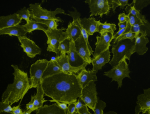
HUVEC cells were fixed with 1% paraformaldehyde (PFA) and th... -
PE anti-human CD144 (VE-Cadherin)

Human umbilical vein endothelial cells, HUVEC, stained with ... -
APC anti-human CD144 (VE-Cadherin)
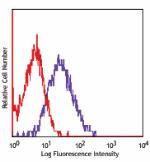
Human umbilical vein endothelial cells, HUVEC, stained with ... -
PerCP/Cyanine5.5 anti-human CD144 (VE-Cadherin)

Human umbilical vein endothelial cells (HUVEC) were stained ... -
Alexa Fluor® 594 anti-human CD144 (VE-Cadherin)
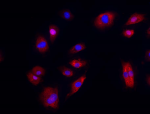
Human umbilical vein endothelial cells (HUVEC) were fixed wi... 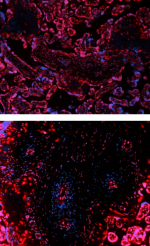
Human paraffin-embedded placenta tissue slices were prepared... -
Alexa Fluor® 647 anti-human CD144 (VE-Cadherin)

Human umbilical vein endothelial cells (HUVEC) were stained ... 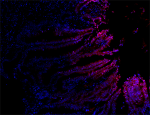
Human paraffin-embedded colorectal cancer tissue slices were... -
PE/Cyanine7 anti-human CD144 (VE-Cadherin)

Human umbilical vein endothelial cells (HUVEC) were stained ... -
PE/Dazzle™ 594 anti-human CD144 (VE-Cadherin)

Human umbilical vein endothelial cells (HUVEC) were stained ... -
TotalSeq™-A0400 anti-human CD144 (VE-Cadherin)
-
TotalSeq™-C0400 anti-human CD144 (VE-Cadherin)
 Login / Register
Login / Register 










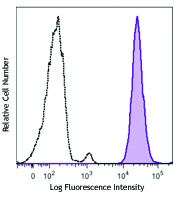
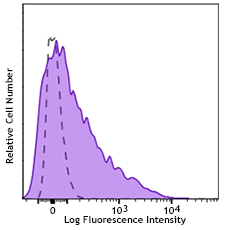



Follow Us